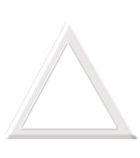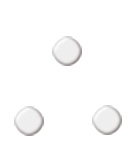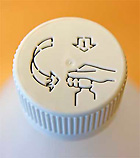Labelling and hazard symbols
Content:
- Look at the label
- Products that are irritating or corrosive
- Products that are hazardous to health
- Products that are toxic or can cause serious or long-term damage to health
- Products that are hazardous to the environment
- Products that are flammable or explosive
- Tactile warnings of danger and child-resistant closures
- Other labelling
- In case of emergency
- Read more
Hazardous chemical products must be labelled with hazard symbols and text that informs about the hazards associated with using the product. Before you purchase a chemical product and bring it into your home, it is a good idea to look for the warning label and read the information on the product’s packaging. Here, you can read about different properties that hazardous chemical products can have and see which warning labels the products must be marked with.
Look at the label
Hazardous chemical products must be marked with hazard symbols framed with red hazard pictograms against a white background.
But there is also another kind of labelling that can be found on older products that were sold several years ago. This type of warning label is square against an orange background and may no longer be used on new products.
Products that are irritating or corrosive




A product with any of these hazard symbols may be corrosive, irritating or harmful to the skin, eyes and respiratory tract. Some can cause severe allergic reactions. If the product is corrosive, it can cause serious injury even in the event of short-term contact, for example if it splashes into the eyes. Products containing corrosive substances such as ammonia, caustic soda (aka lye or sodium hydroxide), certain acids such as vinegar/acetic acid (24%) can be particularly dangerous even in small amounts.
Examples of products that may be labelled with these hazard symbols are all-purpose cleaners, dishwasher detergents, drain cleaners, descaling agents or oven cleaners.
Products that are hazardous to health



In addition to the injuries mentioned above, some products can result in serious harm to your health if you accidentally ingest the substance orally or through inhalation. Examples of such substances are ethylene glycol (antifreeze/coolant), lighter fluids, lamp oils and paraffin oil/kerosene. In addition to the hazard labelling, lamp oils and charcoal lighter fluids must be packed in black, opaque bottles that hold a maximum of 1 litre and have a child-resistant closure. The purpose is to minimise the risk of small children ingesting the product.
Products that are toxic or can cause serious or long-term damage to health



These hazard symbols appear on products that can present serious health risks. For example, they may contain substances that are highly toxic, can cause cancer, affect the ability to have children, harm the unborn child or damage genetic material (DNA). Chemicals with such properties are generally not allowed to be sold to the general public.
Products that are hazardous to the environment


Some chemicals can harm the environment, such as certain paints. If environmental toxins are released into watercourses or forests and land, they can harm both animals and plants. We humans also risk getting the substances in our bodies indirectly through the food we eat or the water we drink.
Think about the environment when you dispose of any leftover product/residues. Bring leftover chemicals to an Recycling centre. Do not pour leftover chemicals into the drain.
Products that are flammable or explosive






Many products are hazardous due to their physical properties, such as products that are flammable, explosive or oxidising. Every year, children and adults suffer burn injuries and property is destroyed due to fires started by improper or inappropriate handling of flammable liquids or explosive products. Examples of flammable liquids are fuels such as petrol, diesel and lamp oils or solvents such as acetone or turpentine and white spirit. Fireworks, gas and liquefied petroleum gas (LPG) bottles/cylinders or spray cans are examples of products that can explode if exposed to heat.
Store flammable and explosive products safely. Read more about the proper handling and storage of flammable and explosive products at The Swedish Civil Contingencies Agency (MSB) External link..
External link..
Tactile warnings of danger and child-resistant closures
In addition to the visible hazard symbol, certain products must have tactile warnings of danger and child-resistant closures.




Example of tactile warnings of danger and a child-resistant closure as a stopper that is difficult for a small child to open.
Other labelling
CE marking
Certain products, such as toys and electrical or electronic equipment for home use, must be CE marked. The CE mark means that the article meets European safety requirements and helps you choose safe products. Upon inspection, however, it has been shown that this is not always true. It is the companies themselves who label the products, and they are not regularly inspected by an outside party.
Marks that look similar to the CE mark may not be used, and products for which there is no requirement for a CE mark may not have one.
You can read more here and see what the CE mark looks like External link..
External link..
Voluntary labels
There are many other labelling symbols, such as environmental, energy, fair trade, organic production and recycling symbols that can help you as an individual make informed choices.
In case of emergency
If there has been an accident with a chemical product, it is important to get help quickly. Therefore you should call 112 immediately and request Poison Information. It is good that you have the package of the chemical at hand. That will make it easier for the Poison Information Center to find correct information about the product's content based on the labelling on the packaging.
Read more on the Swedish Poison Information Center  External link.
External link.
The UFI code provides the Swedish Poisons Information Center with important information
Since January 2021, you can find UFI codes on new products that contain chemicals that are harmful to health. The UFI code provides important information about the product, such as its use, ingredients, and toxicity.
In this way, the UFI Code makes it easier and faster for the poison centre to advise you or your doctor if you or someone close to you has had an accident with a chemical product.
